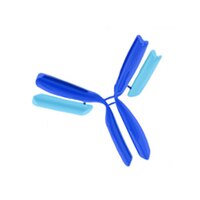The synaptic proteome during development and plasticity of the mouse visual cortex.
Dahlhaus, M; Li, KW; van der Schors, RC; Saiepour, MH; van Nierop, P; Heimel, JA; Hermans, JM; Loos, M; Smit, AB; Levelt, CN
Molecular & cellular proteomics : MCP
10
M110.005413
2010
Kivonat megmutatása
During brain development, the neocortex shows periods of enhanced plasticity, which enables the acquisition of knowledge and skills that we use and build on in adult life. Key to persistent modifications of neuronal connectivity and plasticity of the neocortex are molecular changes occurring at the synapse. Here we used isobaric tag for relative and absolute quantification to measure levels of 467 synaptic proteins in a well-established model of plasticity in the mouse visual cortex and the regulation of its critical period. We found that inducing visual cortex plasticity by monocular deprivation during the critical period increased levels of kinases and proteins regulating the actin-cytoskeleton and endocytosis. Upon closure of the critical period with age, proteins associated with transmitter vesicle release and the tubulin- and septin-cytoskeletons increased, whereas actin-regulators decreased in line with augmented synapse stability and efficacy. Maintaining the visual cortex in a plastic state by dark rearing mice into adulthood only partially prevented these changes and increased levels of G-proteins and protein kinase A subunits. This suggests that in contrast to the general belief, dark rearing does not simply delay cortical development but may activate signaling pathways that specifically maintain or increase the plasticity potential of the visual cortex. Altogether, this study identified many novel candidate plasticity proteins and signaling pathways that mediate synaptic plasticity during critical developmental periods or restrict it in adulthood. Teljes cikk | 21398567
 |
Unchanged survival rates of 14-3-3gamma knockout mice after inoculation with pathological prion protein.
Steinacker, Petra, et al.
Mol. Cell. Biol., 25: 1339-46 (2005)
2004
Kivonat megmutatása
The diagnosis of sporadic Creutzfeldt-Jakob disease (CJD) is based on typical clinical findings and is supported by a positive 14-3-3 Western blot of cerebrospinal fluid. However, it is not clear whether 14-3-3 indicates general neuronal damage or is of pathophysiological relevance in CJD. The fact that the 14-3-3 isoform spectrum in cerebrospinal fluid does not correspond to that found in the brain points to a regulated process. To investigate a possible role of 14-3-3 proteins in transmissible spongiform diseases, we generated a 14-3-3gamma-deficient mutant mouse line by using a classical knockout strategy. The anatomy and cage behavior of the mutant mice were normal. Western blot analyses of brain homogenates revealed no changes in the protein expression of other 14-3-3 isoforms (epsilon, beta, zeta, and eta). Proteomic analyses of mouse brains by two-dimensional differential gel electrophoresis showed that several proteins, including growth hormone, 1-Cys peroxiredoxin, CCT-zeta, glucose-6-phosphate isomerase, GRP170 precursor, and alpha-SNAP, were differentially expressed. Mutant and wild-type mice were inoculated either intracerebrally or intraperitoneally with the Rocky Mountain Laboratory strain of scrapie, but no differences were detected in the postinoculation survival rates. These results indicate that 14-3-3gamma is unlikely to play a causal role in CJD and related diseases. | 15684385
 |













